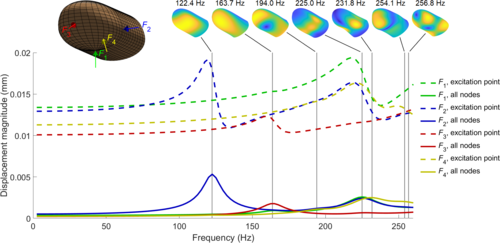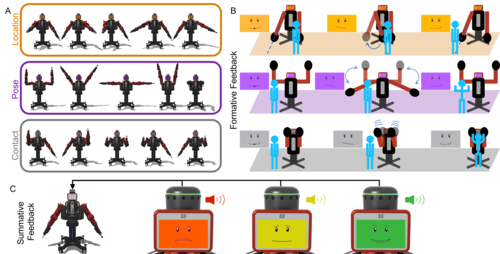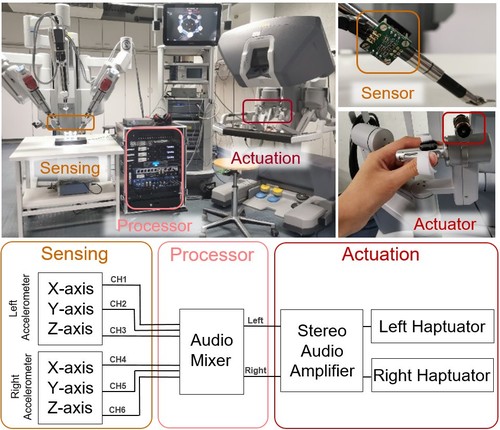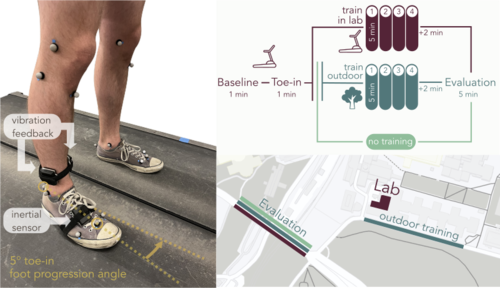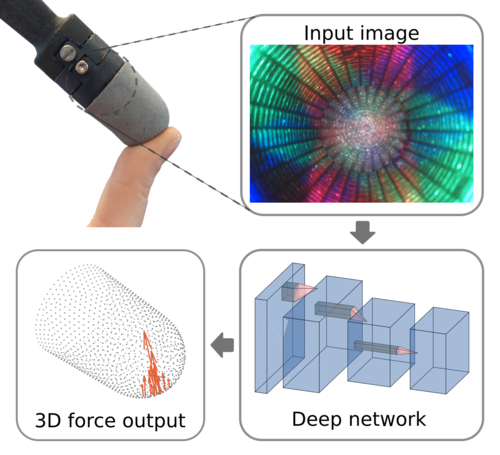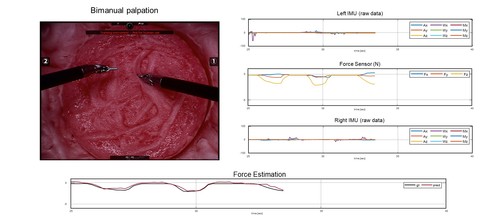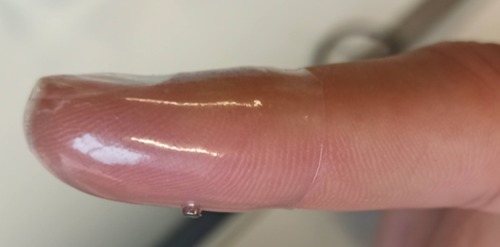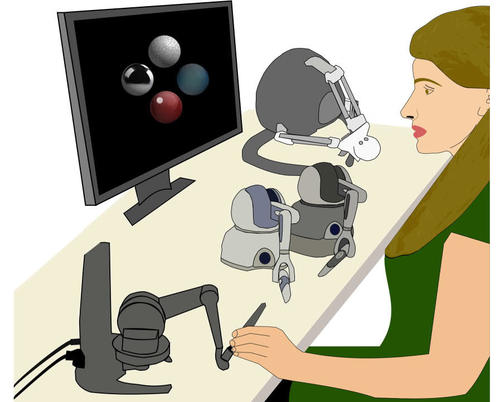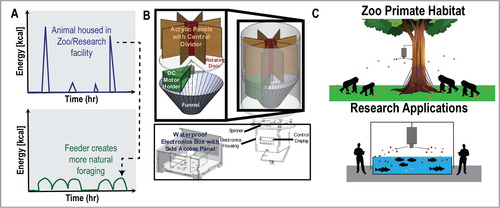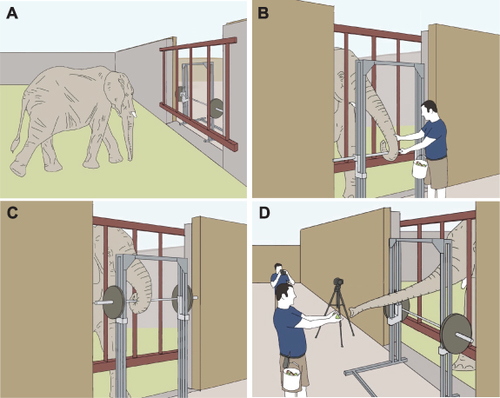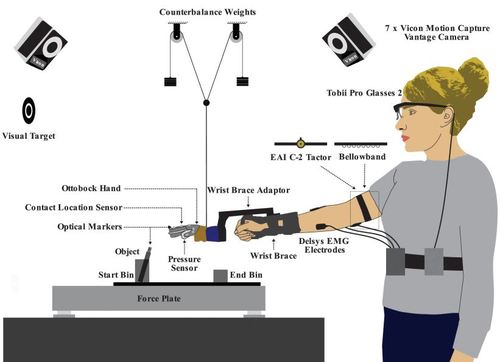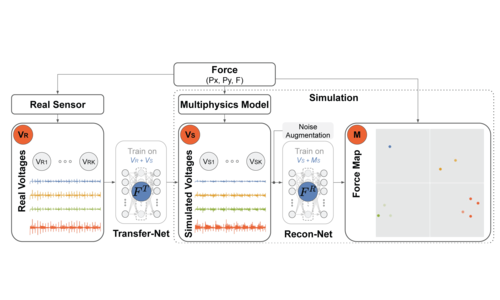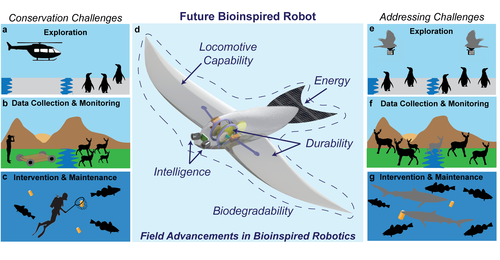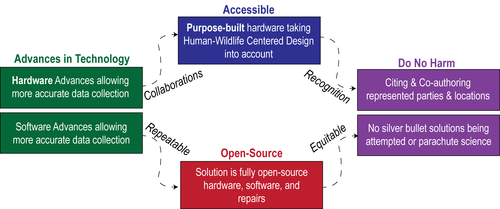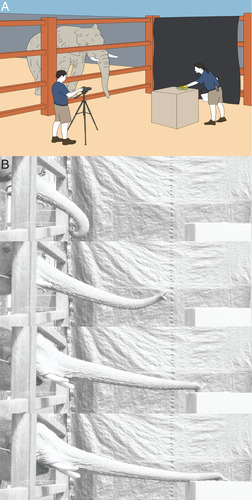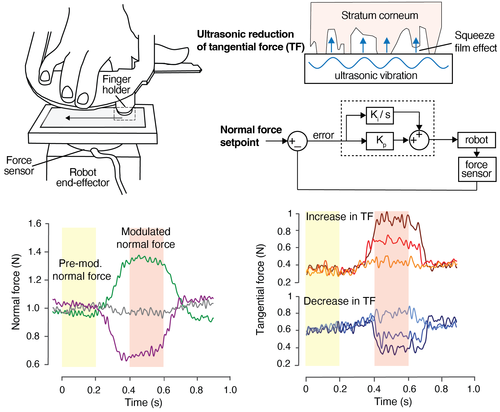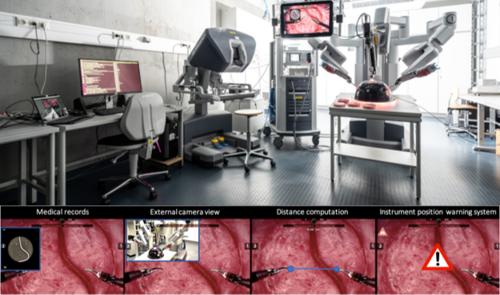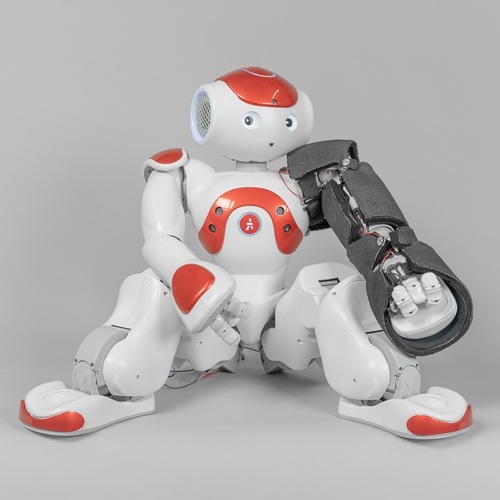2024
Cao, C. G. L., Javot, B., Bhattarai, S., Bierig, K., Oreshnikov, I., Volchkov, V. V.
Fiber-Optic Shape Sensing Using Neural Networks Operating on Multispecklegrams
IEEE Sensors Journal, 24(17):27532-27540, September 2024 (article)
Sanchez-Tamayo, N., Yoder, Z., Rothemund, P., Ballardini, G., Keplinger, C., Kuchenbecker, K. J.
Cutaneous Electrohydraulic (CUTE) Wearable Devices for Pleasant Broad-Bandwidth Haptic Cues
Advanced Science, (2402461):1-14, September 2024 (article)
Tashiro, N., Faulkner, R., Melnyk, S., Rodriguez, T. R., Javot, B., Tahouni, Y., Cheng, T., Wood, D., Menges, A., Kuchenbecker, K. J.
Building Instructions You Can Feel: Edge-Changing Haptic Devices for Digitally Guided Construction
ACM Transactions on Computer-Human Interaction, September 2024 (article) Accepted
Sharon, Y., Nevo, T., Naftalovich, D., Bahar, L., Refaely, Y., Nisky, I.
Augmenting Robot-Assisted Pattern Cutting With Periodic Perturbations – Can We Make Dry Lab Training More Realistic?
IEEE Transactions on Biomedical Engineering, August 2024 (article)
Khojasteh, B., Solowjow, F., Trimpe, S., Kuchenbecker, K. J.
Multimodal Multi-User Surface Recognition with the Kernel Two-Sample Test
IEEE Transactions on Automation Science and Engineering, 21(3):4432-4447, July 2024 (article)
Al-Haddad, H., Guarnera, D., Tamadon, I., Arrico, L., Ballardini, G., Mariottini, F., Cucini, A., Ricciardi, S., Vistoli, F., Rotondo, M. I., Campani, D., Ren, X., Ciuti, G., Terry, B., Iacovacci, V., Ricott, L.
Optimized Magnetically Docked Ingestible Capsules for Non-Invasive Refilling of Implantable Devices
Advanced Intelligent Systems, (2400125):1-21, July 2024 (article)
Serhat, G., Kuchenbecker, K. J.
Fingertip Dynamic Response Simulated Across Excitation Points and Frequencies
Biomechanics and Modeling in Mechanobiology, 23, pages: 1369-1376, May 2024 (article)
Mohan, M., Nunez, C. M., Kuchenbecker, K. J.
Closing the Loop in Minimally Supervised Human-Robot Interaction: Formative and Summative Feedback
Scientific Reports, 14(10564):1-18, May 2024 (article)
Gong, Y., Mat Husin, H., Erol, E., Ortenzi, V., Kuchenbecker, K. J.
AiroTouch: Enhancing Telerobotic Assembly through Naturalistic Haptic Feedback of Tool Vibrations
Frontiers in Robotics and AI, 11(1355205):1-15, May 2024 (article)
Allemang–Trivalle, A., Donjat, J., Bechu, G., Coppin, G., Chollet, M., Klaproth, O. W., Mitschke, A., Schirrmann, A., Cao, C. G. L.
Modeling Fatigue in Manual and Robot-Assisted Work for Operator 5.0
IISE Transactions on Occupational Ergonomics and Human Factors, 12(1-2):135-147, March 2024 (article)
Schulz, A.
Being Neurodivergent in Academia: Autistic and abroad
eLife, 13, March 2024 (article)
Rokhmanova, N., Pearl, O., Kuchenbecker, K. J., Halilaj, E.
IMU-Based Kinematics Estimation Accuracy Affects Gait Retraining Using Vibrotactile Cues
IEEE Transactions on Neural Systems and Rehabilitation Engineering, 32, pages: 1005-1012, February 2024 (article)
Fitter, N. T., Mohan, M., Preston, R. C., Johnson, M. J., Kuchenbecker, K. J.
How Should Robots Exercise with People? Robot-Mediated Exergames Win with Music, Social Analogues, and Gameplay Clarity
Frontiers in Robotics and AI, 10(1155837):1-18, January 2024 (article)
Khojasteh, B., Shao, Y., Kuchenbecker, K. J.
Robust Surface Recognition with the Maximum Mean Discrepancy: Degrading Haptic-Auditory Signals through Bandwidth and Noise
IEEE Transactions on Haptics, 17(1):58-65, January 2024, Presented at the IEEE Haptics Symposium (article)
2023
L’Orsa, R., Lama, S., Westwick, D., Sutherland, G., Kuchenbecker, K. J.
Towards Semi-Automated Pleural Cavity Access for Pneumothorax in Austere Environments
Acta Astronautica, 212, pages: 48-53, November 2023 (article)
Ballardini, G., Cherpin, A., Chua, K. S. G., Hussain, A., Kager, S., Xiang, L., Campolo, D., Casadio, M.
Upper Limb Position Matching After Stroke: Evidence for Bilateral Asymmetry in Precision but Not in Accuracy
IEEE Access, 11, pages: 112851-112860, October 2023 (article)
Lagazzi, E., Ballardini, G., Drogo, A., Viola, L., Marrone, E., Valente, V., Bonetti, M., Lee, J., King, D. R., Ricci, S.
The Certification Matters: A Comparative Performance Analysis of Combat Application Tourniquets versus Non-Certified CAT Look-Alike Tourniquets
Prehospital and Disaster Medicine, 38(4):450-455, August 2023 (article)
Andrussow, I., Sun, H., Kuchenbecker, K. J., Martius, G.
Minsight: A Fingertip-Sized Vision-Based Tactile Sensor for Robotic Manipulation
Advanced Intelligent Systems, 5(8), August 2023, Inside back cover (article)
Lee, Y., Husin, H. M., Forte, M., Lee, S., Kuchenbecker, K. J.
Learning to Estimate Palpation Forces in Robotic Surgery From Visual-Inertial Data
IEEE Transactions on Medical Robotics and Bionics, 5(3):496-506, August 2023 (article)
Block, A. E., Seifi, H., Hilliges, O., Gassert, R., Kuchenbecker, K. J.
In the Arms of a Robot: Designing Autonomous Hugging Robots with Intra-Hug Gestures
ACM Transactions on Human-Robot Interaction, 12(2):1-49, June 2023, Special Issue on Designing the Robot Body: Critical Perspectives on Affective Embodied Interaction (article)
Gertler, I., Serhat, G., Kuchenbecker, K. J.
Generating Clear Vibrotactile Cues with a Magnet Embedded in a Soft Finger Sheath
Soft Robotics, 10(3):624-635, June 2023 (article)
Fazlollahi, F., Kuchenbecker, K. J.
Haptify: A Measurement-Based Benchmarking System for Grounded Force-Feedback Devices
IEEE Transactions on Robotics, 39(2):1622-1636, April 2023 (article)
Brown, J. D., Kuchenbecker, K. J.
Effects of Automated Skill Assessment on Robotic Surgery Training
The International Journal of Medical Robotics and Computer Assisted Surgery, 19(2):e2492, April 2023 (article)
Jadali, N., Zhang, M. J., Schulz, A. K., Meyerchick, J., Hu, D. L.
ForageFeeder: A Low-Cost Open Source Feeder for Randomly Distributed Food
HardwareX, 14(e00405):1-17, March 2023 (article)
Spiers, A. J., Young, E., Kuchenbecker, K. J.
The S-BAN: Insights into the Perception of Shape-Changing Haptic Interfaces via Virtual Pedestrian Navigation
ACM Transactions on Computer-Human Interaction, 30(1):1-31, March 2023 (article)
Schulz, A., Reidenberg, J., Wu, J. N., Tang, C. Y., Seleb, B., Mancebo, J., Elgart, N., Hu, D.
Elephant trunks use an adaptable prehensile grip
Bioinspiration and Biomimetics, 18(2), February 2023 (article)
Magondu, B., Lee, A., Schulz, A., Buchelli, G., Meng, M., Kaminski, C., Yang, P., Carver, S., Hu, D.
Drying dynamics of pellet feces
Soft Matter, 19, pages: 723-732, January 2023 (article)
Thomas, N., Fazlollahi, F., Kuchenbecker, K. J., Brown, J. D.
The Utility of Synthetic Reflexes and Haptic Feedback for Upper-Limb Prostheses in a Dexterous Task Without Direct Vision
IEEE Transactions on Neural Systems and Rehabilitation Engineering, 31, pages: 169-179, January 2023 (article)
Lee, H., Sun, H., Park, H., Serhat, G., Javot, B., Martius, G., Kuchenbecker, K. J.
Predicting the Force Map of an ERT-Based Tactile Sensor Using Simulation and Deep Networks
IEEE Transactions on Automation Science and Engineering, 20(1):425-439, January 2023 (article)
Chellapurath, M., Khandelwal, P., Schulz, A. K.
Bioinspired Robots Can Foster Nature Conservation
Frontiers in Robotics and AI, 10, 2023 (article) Accepted
Schulz, A., Shriver, C., Stathatos, S., Seleb, B., Weigel, E., Chang, Y., Bhamla, M. S., Hu, D., III, J. R. M.
Conservation Tools: The Next Generation of Engineering–Biology Collaborations
Royal Society Interface, 2023, Andrew Schulz, Cassie Shriver, Suzanne Stathatos, and Benjamin Seleb are co-first authors. (article)
Schulz, A., Schneider, N., Zhang, M., Singal, K.
A Year at the Forefront of Hydrostat Motion
Biology Open, 2023, N. Schneider, M. Zhang, and K. Singal all contributed equally on this manuscript. (article)
2022
Schulz, A., Shriver, C., Aubuchon, C., Weigel, E., Kolar, M., III, J. M., Hu, D.
A Guide for Successful Research Collaborations between Zoos and Universities
Integrative and Comparitive Biology, 62, pages: 1174-1185, November 2022 (article)
Richardson, B. A., Vardar, Y., Wallraven, C., Kuchenbecker, K. J.
Learning to Feel Textures: Predicting Perceptual Similarities from Unconstrained Finger-Surface Interactions
IEEE Transactions on Haptics, 15(4):705-717, October 2022, Benjamin A. Richardson and Yasemin Vardar contributed equally to this publication. (article)
Zruya, O., Sharon, Y., Kossowsky, H., Forni, F., Geftler, A., Nisky, I.
A New Power Law Linking the Speed to the Geometry of Tool-Tip Orientation in Teleoperation of a Robot-Assisted Surgical System
IEEE Robotics and Automation Letters, 7(4):10762-10769, October 2022 (article)
Schulz, A., Boyle, M., Boyle, C., Sordilla, S., Rincon, C., Hooper, S., Aubuchon, C., Reidenberg, J., Higgins, C., Hu, D.
Skin wrinkles and folds enable asymmetric stretch in the elephant trunk
Proceedings of the National Academices of Science , 119, August 2022 (article)
Guo, Y., Serhat, G., Pérez, M. G., Knippers, J.
Maximizing buckling load of elliptical composite cylinders using lamination parameters
Engineering Structures, 262, pages: 114342, July 2022 (article)
Mohebbi, N., Schulz, A., Spencer, T., Pos, K., Mandel, A., Casas, J., Hu, D.
The Scaling of Olfaction: Moths have Relatively More Olfactory Surface Area than Mammals
Integrative and Comparitive Biology, 62(1), July 2022, Nina Mohebbi and Andrew Schulz contributed equally. (article)
Serhat, G., Vardar, Y., Kuchenbecker, K. J.
Contact Evolution of Dry and Hydrated Fingertips at Initial Touch
PLOS ONE, 17(7):e0269722, July 2022, Gokhan Serhat and Yasemin Vardar contributed equally to this publication. (article)
Lee, H., Tombak, G. I., Park, G., Kuchenbecker, K. J.
Perceptual Space of Algorithms for Three-to-One Dimensional Reduction of Realistic Vibrations
IEEE Transactions on Haptics, 15(3):521-534, July 2022 (article)
Seyyedrahmani, F., Shahabad, P. K., Serhat, G., Bediz, B., Basdogan, I.
Multi-objective optimization of composite sandwich panels using lamination parameters and spectral Chebyshev method
Composite Structures, 289(115417), June 2022 (article)
Gueorguiev, D., Lambert, J., Thonnard, J., Kuchenbecker, K. J.
Normal and Tangential Forces Combine to Convey Contact Pressure During Dynamic Tactile Stimulation
Scientific Reports, 12, pages: 8215, May 2022 (article)
Rokhmanova, N., Kuchenbecker, K. J., Shull, P. B., Ferber, R., Halilaj, E.
Predicting Knee Adduction Moment Response to Gait Retraining with Minimal Clinical Data
PLOS Computational Biology, 18(5):e1009500, May 2022 (article)
Forte, M., Gourishetti, R., Javot, B., Engler, T., Gomez, E. D., Kuchenbecker, K. J.
Design of Interactive Augmented Reality Functions for Robotic Surgery and Evaluation in Dry-Lab Lymphadenectomy
The International Journal of Medical Robotics and Computer Assisted Surgery, 18(2):e2351, April 2022 (article)
Burns, R. B., Lee, H., Seifi, H., Faulkner, R., Kuchenbecker, K. J.
Endowing a NAO Robot with Practical Social-Touch Perception
Frontiers in Robotics and AI, 9, pages: 840335, April 2022 (article)
Park, K., Lee, H., Kuchenbecker, K. J., Kim, J.
Adaptive Optimal Measurement Algorithm for ERT-Based Large-Area Tactile Sensors
IEEE/ASME Transactions on Mechatronics, 27(1):304-314, February 2022 (article)
Guo, Y., Pérez, M. G., Serhat, G., Knippers, J.
A design methodology for fiber layup optimization of filament wound structural components
Structures, 38, pages: 1125-1136, February 2022 (article)
Sun, H., Kuchenbecker, K. J., Martius, G.
A Soft Thumb-Sized Vision-Based Sensor with Accurate All-Round Force Perception
Nature Machine Intelligence, 4(2):135-145, February 2022 (article)
Fraune, M. R., Leite, I., Karatas, N., Amirova, A., Legeleux, A., Sandygulova, A., Neerincx, A., Tikas, G. D., Gunes, H., Mohan, M., Abbasi, N. I., Shenoy, S., Scassellati, B., Visser, E. J. D., Komatsu, T.
Lessons Learned About Designing and Conducting Studies From HRI Experts
Frontiers in Robotics and AI, 8(772141):1-18, January 2022 (article)
Gourishetti, R., Kuchenbecker, K. J.
Evaluation of Vibrotactile Output from a Rotating Motor Actuator
IEEE Transactions on Haptics, 15(1):39-44, January 2022, Presented at the IEEE Haptics Symposium (article)



